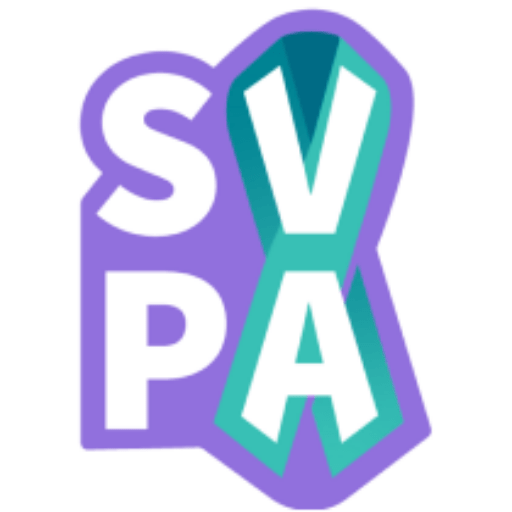The Sexual Violence Prevention Association (SVPA) writes in response to the Department of Education’s Title IX new final rule that requires schools to respond promptly to all complaints of sex discrimination with a fair, transparent, and reliable process.
On Friday, April 19th, the Department of Education released a new Title IX rule, shaping how K-12 schools and higher education institutions respond to sex-based discrimination. The new regulations are a significant step forward in supporting survivors of sexual violence and expanding Title IX protections. However, the SVPA is disappointed in the lack of sexual violence prevention regulations.
Positive Improvements
The SVPA is grateful for the changes to strengthen Title IX and protect students from sex discrimination. In conjunction with our partner organizations, we commend the Biden administration for listening to the voices of students, parents, educators, and survivors. The SVPA greatly appreciates and honors the many students, survivors, and advocates who have fought for years to right the wrongs of the 2020 Title IX Regulations. The 2020 regulations, published under the Trump Administration, stripped survivors of vital protections and support. (NAESV Statement). After four years of survivor-led advocacy, we finally succeeded.
The 2024 regulations rescind the 2020 regulations and increase protections for survivors of sexual and domestic violence as well as protections for LGBTQIA+ students and students who are pregnant or parenting. These improvements will ensure students have the freedom to learn without facing discrimination (NWLC). Now, more students will be able to exercise their right to education at K-12 schools and colleges. (Know Your 9)
Nonconsensual Deepfake Pornography
The SVPA commends the inclusion of nonconsensual artificial intelligence (AI) pornography in the definition of online harassment. Defining “Online harassment [to] include… the nonconsensual distribution of intimate images (including authentic images and images that have been altered or generated by artificial intelligence (AI) technologies)” broadens the scope of Title IX protections. This expansion of Title IX will be able to help more victims stand up against sex-based discrimination and their harassers, including perpetrators of intimate image abuse and nonconsensual deepfake pornography. This addition to Title IX will protect students and make K-12 and colleges safer and ensure everyone can access education free from discrimination or harassment.
Public Awareness Events Prevention Insights
Further, the SVPA commends the requirement that disclosures made at public awareness events be incorporated into future prevention training. Public awareness events are events that occur on campuses where students advocate for a particular issue. It is often a place where students feel comfortable to share their experiences. If a school is hosting a public awareness event, under this new rule, these events are not required to have mandated reporters in attendance. However, if they are present and hear a disclosure made, institutions and schools are required to incorporate these insights into future prevention training efforts. This stipulation will help keep students safe and prevent the recurrence of offenses.
Lack of Prevention
The purpose of Title IX has always been to eliminate gender discrimination in educational institutions. It has long been a tenant of Title IX that schools are required to prevent the recurrence of sexual harassment. The new rule ensures that systemic harm to survivors is diminished, such as by removing traumatic grievance procedures and requiring that schools address complaints even if the reported harassment does not meet the level required for review. Yet, the response-sided guidance outlined in the new rules neglects to address the very issues that cause sexual violence, ensuring its perseverance in educational institutions. This focus on reactive policies puts individuals at higher risk since resources are only allocated to treatment and remedies after an incident has already occurred.
We appreciate that the Department acknowledged our comment but are disappointed that they made no substantial changes to prevention. The very essence of Title IX requires the implementation of robust prevention strategies to protect students and employees. Not only does Title IX have the power to prevent sexual violence from happening, but it also has the responsibility to do so. As we have stated previously, the SVPA believes that Title IX should require schools to have a comprehensive prevention program to ensure that sexual harassment and violence do not occur in the first place. While acknowledging the “longstanding Title IX obligation to prevent future recurrence of harassment”, the final rule makes no changes to aid with the prevention of sexual violence before a situation arises. By doing so, Title IX is not fulfilling its purpose of eliminating gender discrimination in education institutions and is only responding to an incident that could have already caused catastrophic and life-altering effects.
By recognizing the shortcomings of prevention education and not implementing any additional programs, Title IX is not being effectively used to help prevent primary sexual violence and is failing the students and employees the law is designed to protect. A response-oriented approach does students a disservice and puts them at unnecessary risk.
The Need for Prevention
The new response-oriented approach defies the Department of Education’s words and mission to implement Title IX as Congress intended. On numerous occasions, the Department has stated the goal and importance of preventing sexual violence before a situation occurs. As the Department has previously said, “The Department understands…that prevention of sexual harassment incidents before they occur is a worthy and desirable goal” (July 12, 2022) and that “…the Department agrees with commenters that educators, experts, students, and employees should also endeavor to prevent sexual harassment from occurring in the first place” (June 28, 2022). Despite this, the new Title IX ruling does not add any requirements for preventing occurrence, only recurrence. The response-oriented approach does not honor the wishes of students or the Department.
This new rule describes how to “prevent the recurrence” of numerous instances of sex discrimination but does not discuss what actions should be taken to prevent the first occurrence from ever happening. The SVPA appreciates the new ruling’s stance on preventing recurrence, but allowing it to happen even once fails to keep students and employees safe. Title IX should not operate through a response-oriented approach and should be proactive in instilling prevention measures.
Prevention Requirements
The SVPA demands for Title IX to include prevention education. All elementary, middle, high school and higher education institutions should be required to adopt a comprehensive prevention program for all students, faculty, and staff. This training should be thorough and discuss how to prevent sexual violence and sex discrimination instead of just how to respond and react to it. This training should discuss primary, secondary, and tertiary prevention and their differences. Given the Department’s changes and lack of prevention initiatives included in the final rule, the SVPA will reiterate recommendations that can be implemented to improve prevention mechanisms in education environments:
A. Universal
Comprehensive prevention programs must be required for all students with an active status, including transfer students, students studying abroad, graduate students, and part-time students. The program must also be necessary for all staff and faculty members, including adjunct professors, TAs, RAs, etc.
B. Frequency
All active students, faculty, and staff must receive a minimum of 1-hour of training every six months. Institutions are highly encouraged to adopt the low-dosage/high-frequency model. For example, institutions can hold a 30-minute training session every three months.
C. Personnel
Program administration should be to an audience of 200 people at a maximum. For elementary, middle, and high schools, a “trusted adult” is highly encouraged to administer the program. A “trusted adult” refers to an adult the students are already familiar with, such as their teacher, guidance counselor, or school nurse. Declining to add any sexual violence prevention training or education programs is harmful to the students that Title IX was established to protect.
D. Program
The program must be conducted in person to the best extent possible. When not reasonably possible, it must be conducted live using a virtual medium (e.g., Zoom, Microsoft Teams, Google Meet). The program cannot consist of an online module or pre-recorded videos except as supplemental elements.
E. Resources
Prior to the program, the school must provide a confidential process for requesting accommodations for students who have experienced sexual violence and/or may find attending comprehensive prevention programming upsetting. During and immediately following the program, the school must provide resources on-site and/or immediately available for those who experience mental health issues due to the topics covered. These resources
include but are not limited to, counselors/advocates who are certified as Rape Crisis Counselors or the equivalent in their state.
F. Content
The content must be evidence-based, medically accurate, and compliant with contemporary best practices. It must incorporate proven best practices for changing social norms/personnel actions, bystander intervention, and accessing survivor support. The content in elementary, middle, and high schools must cover safe/unsafe touch, creating/respecting boundaries, and identifying trusted adults. These topics do not need to be covered annually, but they should train each student at some point. Higher education content must cover affirmative consent, healthy relationships, conflict resolution, and digital harassment. These topics do not need to be covered yearly, but each student should complete training at some point.
G. Compounding
The material must be age-appropriate for elementary, middle, and high schools. The material must be continuous and build upon itself. It cannot cover the same topics every year.
H. Adaptive
An internal program evaluation must be conducted annually. The program must be adapted every two years based on internal assessment, new research, and best practices. The decision-making process for updating the program must include students and alumni who graduated within the past five years.
I. Reporting
All schools must report to the Department of Education the percentage of students who attended the program, what dates the program was held, the length of the program, the topics covered, whether virtual or in person, and what percentage of absent students received an excused absence.
The new ruling will mark an increase in the protections afforded to survivors. The SVPA believes that Title IX intends to prevent sex and gender discrimination before it can occur and that limiting prevention efforts to response is permitting Title IX to fail those it is meant to protect.
Prevention Funding
The SVPA is disappointed in the Department’s decision not to add prevention measures under Title IX. In the new ruling, the Department explains that delegating the budget is not in the Department’s purview. It states that “funding for prevention education, the authority to appropriate money for certain activities lies with Congress.” Thus, the SVPA vigorously implores the Department to advocate for and request funding from Congress for prevention training and education programs on how to prevent sexual violence. Prevention measures, such as education training or programs, will help Title IX reach its full potential and protect students from becoming victims of sexual violence or sex discrimination.
While the new Title IX ruling put out by the Department of Education is a significant improvement from the current Title IX provisions, there are still substantial steps that should be taken to protect students from sex discrimination. Title IX should include prevention measures to protect students before any harm comes their way. With prevention measures in place, Title IX will prevent many more students from becoming victims of sexual violence or sex discrimination.
Please contact Omny Miranda Martone, the Founder and CEO of the Sexual Violence Prevention Association (SVPA), with any questions at info@s-v-p-a.org.
Thank you,
Sexual Violence Prevention Association (SVPA)







